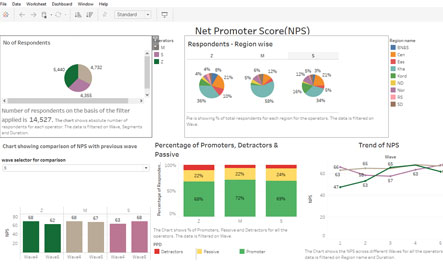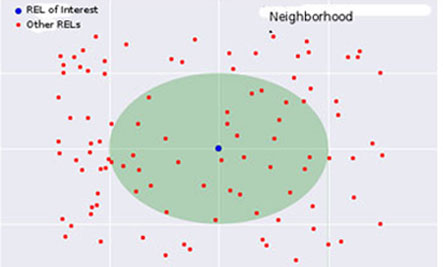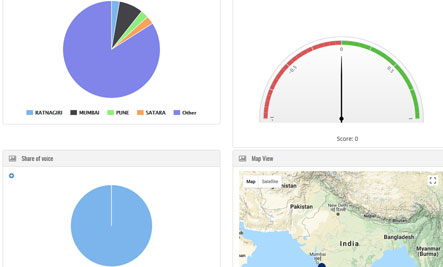Telecom
Decisions in the rapidly changing telecom world needs to be fast and based on data and facts. Telecom companies have huge volume of data in their organizations but these are residing in silos. Insights from structured and unstructured data should be actionable in order to drive revenue, arrest customer attrition and improve performance.
Business Brio uses analytics and data science techniques to identify hidden patterns in volumes of data – be it customer, channel or assets - to derive business benefits. The company is performing customer analytics for one of the largest telecom providers in EMEA region since 2015. Advanced analytics and dashboard help the client to understand their competitive advantages, pricing models and mitigation strategies around the challenges in the market. Actionables around demographics and service areas have improved the NPS score over subsequent waves in last couple of years and hence increased penetration in the market.
Business Brio is partnering with telecom clients to improve channel and customer strategy and expand geographical spread.
Forecasting
At Business Brio, we have used Single Exponential Smooth, Double Exponential Smooth, ARIMA and back-propagation neural network. We did find Neural network to have better forecasting performance than the classical forecasting algorithms in case of wind energy forecasting for a particular project and won the NASSCOM Analytics Innovation award in 2015 for effectively using the same for business.
Optimization
Methods like Goal Node, Integer Linear Program, Simplex Method and Interior Point Method are used depending on the context and relevance. At Business Brio we use Lindo as a tool for optimization.
Machine Learning
Unsupervised and supervised learning methods like regression, support vector machines (SVM),KNN, K-means, PCA are used to recognize patterns and make data-driven predictions or decision outputs. We extensively use Python and R for applying the algorithms.
Decision Trees
CART, CHAID, Random Forests, mathematical and computational techniques are used to aid the categorization and classification of a given data information. Apart from programming tools, we also use WEKA for decision trees.
Sentiment Analysis
Opinion mining or emotion AI refers to the use of natural language processing, text analysis, and computational linguistics to systematically identify, extract, quantify, and study affective states and subjective information. In past projects, we have heavily used LSE, HSA, text mining for semantic algorithms.
Social Media Analytics
Predictive Asset maintenance
Customer Value Analytics
Churn Prediction
Channel Performance
Applications
Ask For a Consultation
Comprehend volumes of data to strengthen telecom network and improve customer experience.
Advantages
View how our technology works
Scalable Solutions
Scalable solutions for future for seamless upgrades of features and integration with other IT system/data sources for upstream and downstream linkagesProcess Study
In-depth process study to understand the nuances of specific project scope for your product/serviceSuccess Criteria
As most of the analytics/data science projects have research based probabilistic outcome and is not as deterministic as other IT projects, understanding and setting a process/benchmark for such projects are very importantEngagement Model
Customized engagement model based on requirement and fitmentProduct Agnostic
Not limited to ProductsAdaptive Dashboards
Option of both proprietary and open source technology for responsive dashboard for algorithm driven data science applicationsTuned Models
Specific model building & validation for processes as per need starting from machine learning to neural network. No retrofit of pre-build models.
Recommended For You
Our Engagements
Our Engagements




























